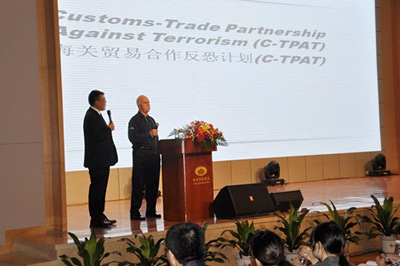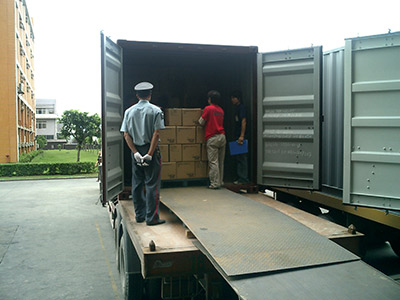WHAT IS CTPAT?

The Customs Trade Partnership Against Terrorism program (CTPAT) is a voluntary joint effort between the U.S. Customs and Border Protection (CBP) and businesses involved in the importing of goods into the United States.
The CTPAT program was initiated shortly after the 9/11 attacks, November 2001 to establish a joint government / business initiative to improve supply chain security protecting the United States against terrorism, illegal contraband, Human Smuggling and other threats.
CTPAT is now one of the largest and most successful public-private sector partnerships in the world designed to improve border security providing the highest level of cargo security through close cooperation with international supply chain businesses.
SHOULD YOU PARTICIPATE IN THE CTPAT PROGRAM?
The program has grown from the established seven major importers to over 11,500 members. As of March 2019, there were 4,079 U.S. Importers certified in the Program, the largest entity in CTPAT.
CBP has continued to expand the program through Mutual Recognition Arrangement with the United States to include foreign governmental programs such as:
-
- AEO (Authorized Economic Operator) Europe, Latin America, and Mexico
- PIP (Partners in Protection) Canada
WHAT SSIGC CAN DO FOR YOU
We understand the challenges of today’s supply chain to meet shipping deadlines, protecting cargo and being a good corporate citizen while remaining compliant with U.S. Customs regulations. Our goal is to provide the customer with solutions to assist in the certification and validation of their CTPAT program.

As a global leader we have expanded our compliance initiatives to include World Customs Organization programs such as AEO and PIP, accepted under mutual recognition agreements with CTPAT. Our staff is well qualified and experienced in the development and implementation of the WCO programs. SSIGC support and training enabled Fortune 100 / 500 companies to achieve Tier III validation, the highest level within the U.S. Customs CTPAT program.
SSI Global Compliance, LLC will support your business with a comprehensive plan development that will include:
- Five-Step Risk Assessment
- CTPAT Policy and Procedure Manual development
- Submission of the Security Profile into the CBP on-line portal
- Physical Security design and implementation
- Validation audit support
- Auditing (Supplier and/or vendor validation)
- Training
CTPAT VISION
Moving Forward Together to the Next Level
NEW MINIMUM SECURITY CRITERIA (MSC) IMPLEMENTED FOR 2020
Through collaboration and partnership, the CTPAT Minimum Security Criteria (MSC) guidelines were created in partnership with industry to better secure the international supply chain. The MSC guidelines are the culmination of over 17 years of operational experience in supply chain security, including over 30,000 CTPAT validations and revalidations to include established “Best Practices” that have evolved into minimum standards.
The new MSC has established focus areas of Corporate Security, Transportation Security and People / Physical Security establishing the implementation of “MUST / SHOULD” criteria based on minimum standards to assist and guide businesses with their programs.
The MSC has implemented three new areas of compliance for new and existing members of CTPAT
- Security Vision and Responsibility
- Cybersecurity
- Agricultural Security
CTPAT COMPLIANCE – BENEFITS

- Minimal inspections into U.S. ports
- Competitive advantage for future market share
- Protection for your supply chain
- Reduction of documentation
- Speed to market
- Sustainable growth
- Key qualified business partner for U.S. Importers
- Increased revenue
- Good Corporate citizen
RISKS / CTPAT NON-COMPLIANCE
- Loss of revenue
- U.S. Importers mandating compliance
- Increase inspections
- Extended delivery time
- Breach of contract – delivery terms
- Potential loss of product
- Transportation issues (land and sea)